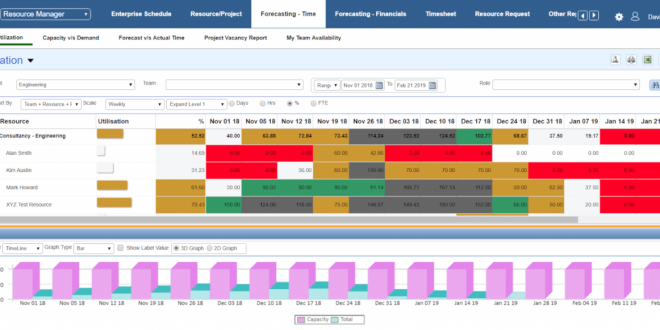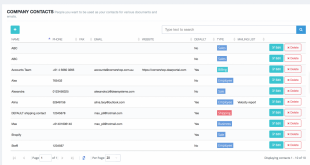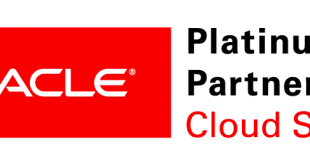Resource software takes center stage as an indispensable tool for businesses and organizations looking to optimize their resource management. This comprehensive guide delves into the intricacies of resource software, providing a thorough understanding of its types, features, benefits, implementation, and future trends.
Whether you’re a seasoned resource manager or just starting your journey, this guide will equip you with the knowledge and insights necessary to harness the full potential of resource software.
From project management to inventory control, resource software streamlines operations, enhances efficiency, and empowers businesses to make informed decisions. Its versatility extends across industries, enabling organizations of all sizes to maximize resource utilization, reduce costs, and achieve their goals.
Resource Software Overview
Resource software is a type of software that assists organizations in managing and optimizing the utilization of their resources. These resources can include human resources, financial resources, physical assets, and information technology (IT) resources.
Resource software is designed to improve the efficiency and effectiveness of resource allocation and utilization within an organization. It provides a centralized platform for managing resource requests, scheduling, tracking, and reporting.
Examples of Resource Software
- Human Resource Management Software:Manages employee data, payroll, benefits, and performance evaluations.
- Project Management Software:Plans, schedules, and tracks projects, allocating resources and monitoring progress.
- Asset Management Software:Tracks and manages physical assets, such as equipment, vehicles, and facilities.
- IT Resource Management Software:Manages IT resources, including hardware, software, and network infrastructure.
Benefits of Using Resource Software
- Improved resource allocation:Optimizes resource utilization by matching resources to tasks based on availability and skills.
- Enhanced visibility and control:Provides a centralized view of resource availability, utilization, and performance.
- Increased efficiency:Automates resource scheduling and tracking, reducing manual effort and errors.
- Better decision-making:Provides data and insights to support informed decision-making about resource allocation.
- Improved collaboration:Facilitates communication and coordination among resource managers and users.
Types of Resource Software
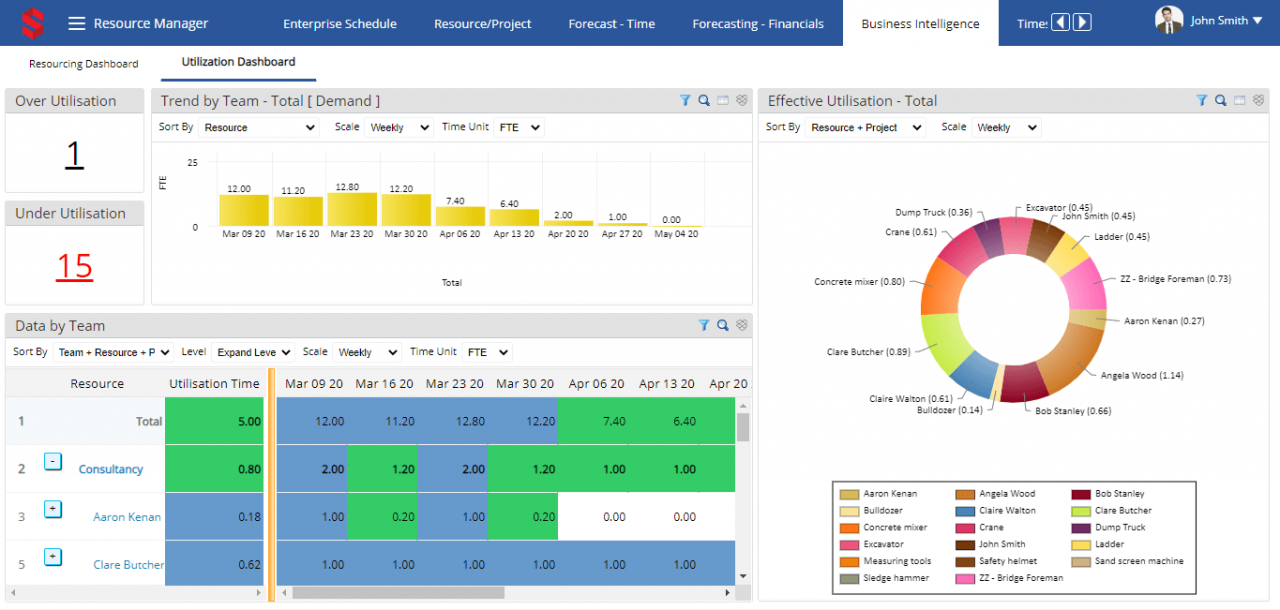
Resource software encompasses a diverse range of tools designed to optimize the management and utilization of resources within an organization. These software solutions fall into distinct categories, each catering to specific resource management needs.
Key types of resource software include:
Project Management Software
Project management software assists in planning, scheduling, and executing projects effectively. It provides features for:
- Task creation and assignment
- Resource allocation and scheduling
- Collaboration and communication
- Project tracking and reporting
Examples: Microsoft Project, Asana, Trello
Scheduling Software
Scheduling software focuses on optimizing resource availability and utilization. It enables:
- Resource scheduling and availability management
- Conflict resolution and resource leveling
- Resource utilization tracking
- Integration with other resource management systems
Examples: SAP Workforce Scheduling, Kronos Workforce Ready, ADP Workforce Now
Inventory Management Software
Inventory management software helps organizations track and manage physical and digital resources. It provides capabilities for:
- Inventory tracking and forecasting
- Stock replenishment and reorder management
- Inventory valuation and cost analysis
- Warehouse management and logistics
Examples: SAP Inventory Management, Oracle Inventory Management, NetSuite Inventory Management
Features and Capabilities of Resource Software
Resource software offers a comprehensive suite of features designed to streamline and optimize resource management. These features empower organizations to effectively allocate resources, track progress, and enhance overall efficiency.
Essential Features
- Task Management:Create, assign, and track tasks to ensure timely completion and accountability.
- Resource Allocation:Allocate resources to tasks based on availability, skills, and workload to optimize utilization.
- Reporting:Generate detailed reports on resource usage, project progress, and resource utilization to identify areas for improvement.
Advanced Capabilities
In addition to essential features, resource software offers advanced capabilities to enhance resource management:
- Integration with Other Software:Integrate with project management, accounting, and CRM systems to streamline workflows and access data seamlessly.
- Mobile Access:Access resource information and manage tasks remotely, ensuring real-time updates and flexibility.
- Resource Forecasting:Forecast resource needs based on historical data and project plans to anticipate future demand and avoid over-allocation.
Benefits of These Features
The comprehensive features and capabilities of resource software provide numerous benefits for effective resource management:
- Improved Resource Utilization:Optimize resource allocation to ensure maximum utilization and minimize idle time.
- Enhanced Collaboration:Facilitate collaboration among team members by providing a central platform for task management and resource allocation.
- Increased Productivity:Streamline workflows and automate tasks to enhance productivity and efficiency.
- Better Decision-Making:Access real-time data and insights to make informed decisions about resource allocation and project planning.
Benefits of Using Resource Software

Resource software provides numerous benefits that can significantly enhance an organization’s efficiency and productivity. By optimizing resource allocation and utilization, it enables businesses to maximize the value of their resources while reducing costs.
One of the primary benefits of resource software is its ability to improve resource utilization. By providing a centralized platform for managing and tracking resources, organizations can gain a comprehensive view of their resource availability and usage. This allows them to identify and eliminate inefficiencies, such as underutilized or idle resources, and allocate resources more effectively to meet business demands.
Cost Savings
Resource software can lead to significant cost savings for organizations. By optimizing resource allocation and reducing waste, businesses can minimize the expenses associated with overstaffing, understaffing, and inefficient resource utilization. Additionally, resource software can help organizations optimize their resource planning and scheduling, which can lead to reduced overtime costs and improved labor utilization.
Increased Productivity
By providing real-time visibility into resource availability and utilization, resource software empowers managers to make informed decisions and allocate resources strategically. This can lead to increased productivity, as teams have the right resources at the right time to complete their tasks effectively.
Moreover, resource software can automate repetitive tasks, such as scheduling and resource allocation, freeing up managers to focus on more strategic initiatives.
Case Studies
Numerous case studies have demonstrated the tangible benefits of resource software implementation. For example, a leading healthcare provider implemented resource software to optimize its workforce scheduling and resource allocation. The organization was able to reduce overtime costs by 20%, improve patient care by 15%, and increase staff satisfaction by 10%.
In another case study, a manufacturing company implemented resource software to improve its production planning and scheduling. The company was able to reduce production lead times by 15%, increase production output by 10%, and improve overall equipment utilization by 20%.
5. Implementation and Best Practices
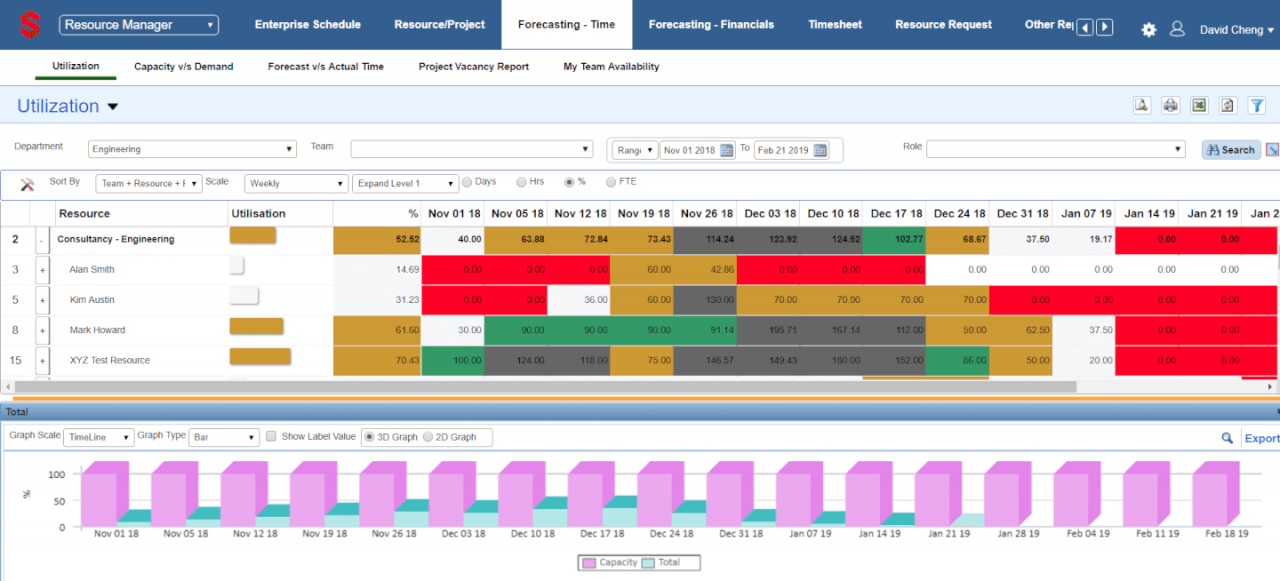
Implementing resource software effectively requires careful planning and execution. Here are the key steps involved:
Planning and Assessment
- Identify your resource management needs and objectives.
- Evaluate different resource software solutions to find the best fit for your organization.
- Create a detailed implementation plan that Artikels the project timeline, resources, and responsibilities.
Deployment and Configuration, Resource software
- Install the resource software on your servers or cloud platform.
- Configure the software according to your specific requirements, including user permissions, resource types, and workflows.
- Integrate the software with other relevant systems, such as HR, project management, and accounting.
Training and Adoption
- Provide comprehensive training to users on how to effectively use the software.
- Encourage user adoption by highlighting the benefits of the software and providing ongoing support.
- Monitor usage and gather feedback to identify areas for improvement.
Best Practices for Effective Resource Software Utilization
- Use the software to track all relevant resources, including employees, equipment, and facilities.
- Create clear and consistent resource management policies and procedures.
- Use the software to forecast resource demand and identify potential shortages.
- Regularly review and update resource data to ensure accuracy.
- Leverage reporting and analytics capabilities to optimize resource allocation and utilization.
Trends and Future of Resource Software
The landscape of resource software is continuously evolving, driven by technological advancements and changing business needs. Emerging trends are shaping the future of resource management, offering new possibilities and challenges for businesses and resource managers.
One significant trend is the adoption of cloud-based resource software. Cloud computing provides greater flexibility, scalability, and accessibility, allowing businesses to manage resources from anywhere with an internet connection. Additionally, cloud-based solutions offer automated updates and maintenance, reducing the burden on IT teams.
Artificial Intelligence (AI) and Machine Learning (ML)
AI and ML are transforming resource management by automating tasks, improving decision-making, and optimizing resource allocation. AI-powered algorithms can analyze vast amounts of data to identify patterns, predict demand, and make recommendations for resource utilization. ML algorithms can learn from historical data to improve the accuracy of forecasts and optimize scheduling.
Integration with Enterprise Systems
Modern resource software is increasingly integrating with other enterprise systems, such as enterprise resource planning (ERP) and customer relationship management (CRM) systems. This integration allows for a more comprehensive view of business operations, enabling resource managers to make informed decisions based on real-time data from across the organization.
Mobile Optimization
With the increasing use of mobile devices in the workplace, resource software is being optimized for mobile platforms. Mobile apps provide convenience and flexibility, allowing resource managers to access and manage resources on the go. Mobile optimization also enables real-time communication and collaboration among team members.
Data Analytics and Reporting
Advanced data analytics and reporting capabilities are becoming essential in resource software. Businesses need to analyze resource utilization, identify trends, and make data-driven decisions to improve efficiency and productivity. Resource software is providing robust reporting tools that enable resource managers to visualize data, generate insights, and make informed decisions.
Impact on Businesses and Resource Managers
These trends have significant implications for businesses and resource managers. Cloud-based solutions and mobile optimization empower businesses with greater flexibility and accessibility. AI and ML enhance decision-making and optimization, leading to improved resource utilization. Integration with enterprise systems provides a holistic view of business operations, enabling more strategic resource management.
Advanced data analytics and reporting capabilities empower resource managers with data-driven insights to make informed decisions and improve performance.
Last Word
In the ever-evolving landscape of business, resource software has emerged as a cornerstone of effective resource management. Its advanced capabilities and integration with other software systems empower businesses to stay competitive, adapt to changing market demands, and drive innovation. As technology continues to advance, resource software will undoubtedly play an even more pivotal role in shaping the future of resource management.
By leveraging the insights and best practices Artikeld in this guide, businesses can unlock the full potential of resource software, optimize their operations, and gain a competitive edge in today’s dynamic business environment.
Originally posted 2024-05-20 15:35:00.
 Bussines News Daily
Bussines News Daily
